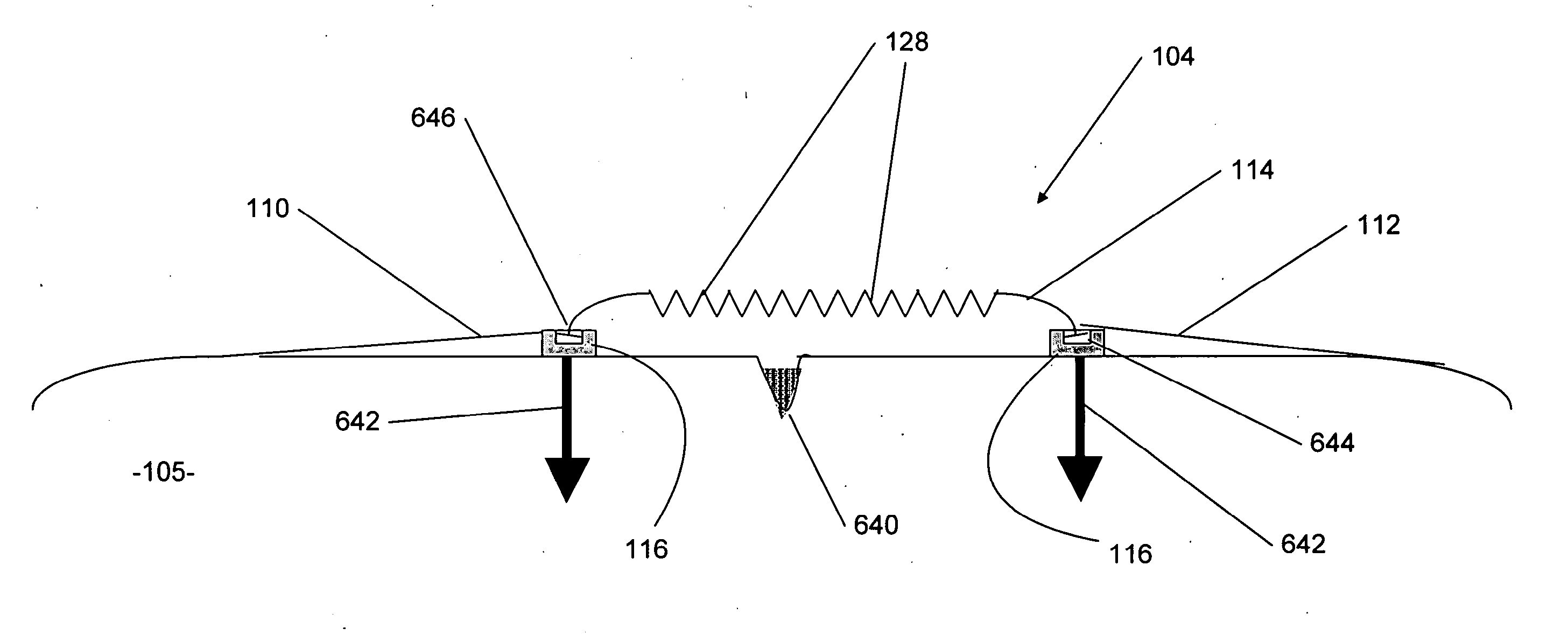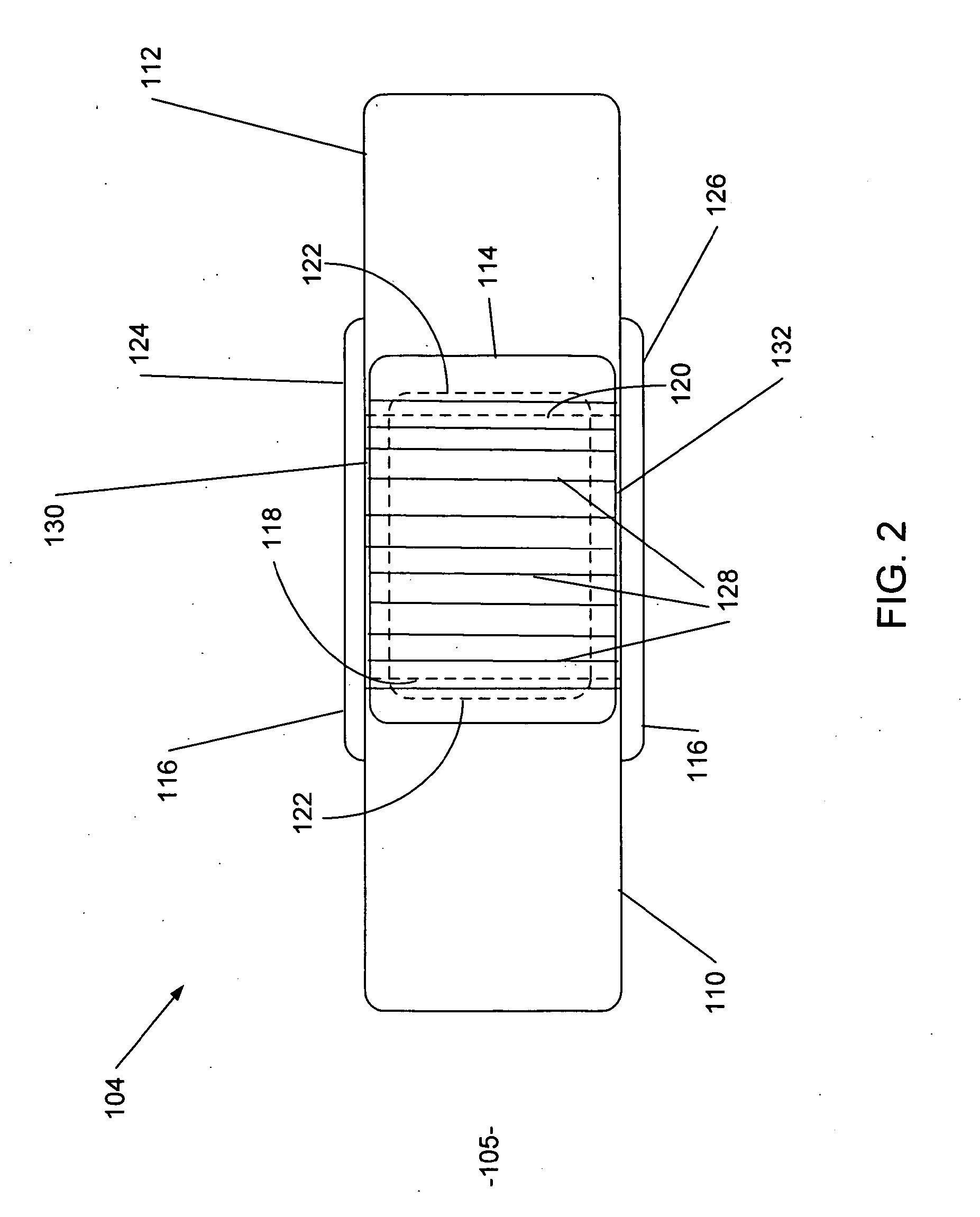Wound guard bandage
a bandage and wound technology, applied in the field of wound guard bands, can solve the problems of preventing re-injury, reducing the healing process, and reducing the healing effect, so as to promote environmental control in proximity, the effect of speeding up the healing process
- Summary
- Abstract
- Description
- Claims
- Application Information
AI Technical Summary
Benefits of technology
Problems solved by technology
Method used
Image
Examples
Embodiment Construction
[0026]FIG. 1 is a perspective view of a disposable bandage product 102 embodiment constructed in accordance with the present invention, comprising a wound guard bandage 104 and packaging 106. The wound guard bandage 104 is enclosed within the packet 106 until the bandage is to be used, at which time the packet 106 is opened and the bandage is removed. For removal, the packet can be provided with a scored section 108 or other construction that can be easily torn away to open the packet and permit the bandage to be withdrawn and applied to the skin. The bandage 104 promotes healing of a wound area by providing a reasonably sterile environment around the wound area, keeping out liquid and contaminants, protecting the wound area from physical impact and abrasions, and facilitating the flow of air to the skin surface of the wound area. The product 102 can be easily transported but yet the bandage 104 is maintained sterile in the packet 106 until use,
[0027]The wound guard bandage 104 incl...
PUM
 Login to View More
Login to View More Abstract
Description
Claims
Application Information
 Login to View More
Login to View More - R&D
- Intellectual Property
- Life Sciences
- Materials
- Tech Scout
- Unparalleled Data Quality
- Higher Quality Content
- 60% Fewer Hallucinations
Browse by: Latest US Patents, China's latest patents, Technical Efficacy Thesaurus, Application Domain, Technology Topic, Popular Technical Reports.
© 2025 PatSnap. All rights reserved.Legal|Privacy policy|Modern Slavery Act Transparency Statement|Sitemap|About US| Contact US: help@patsnap.com



